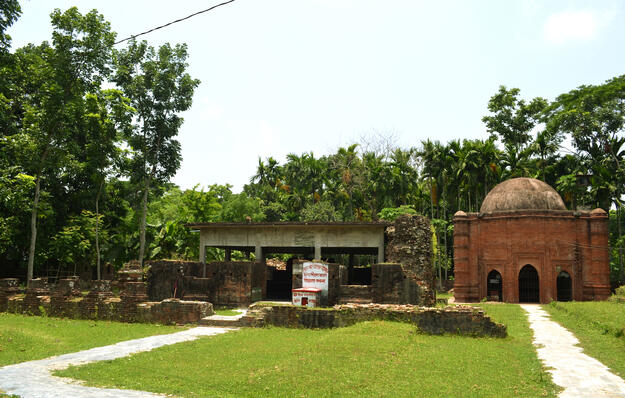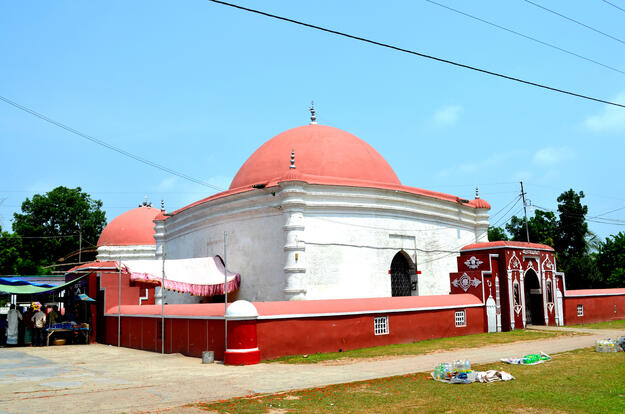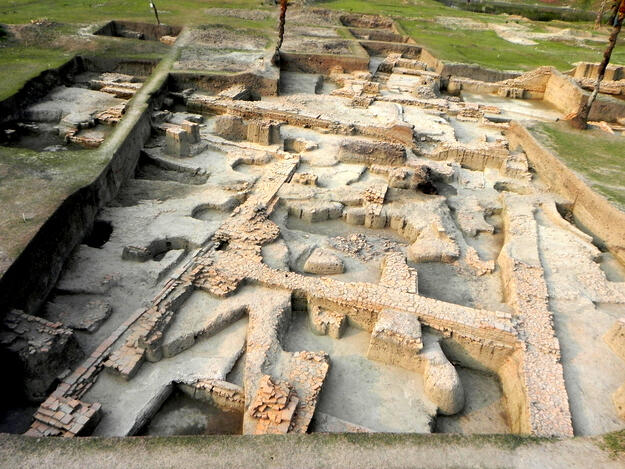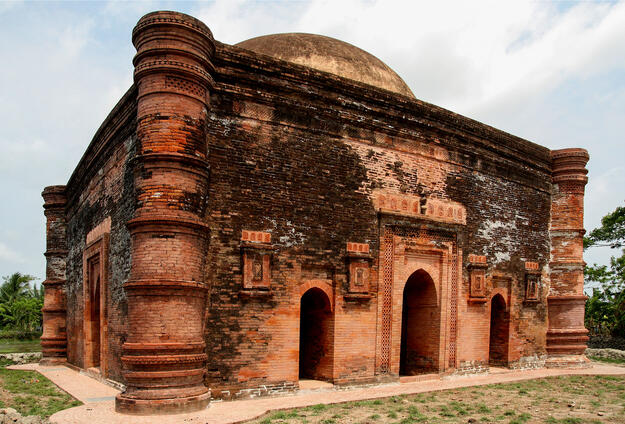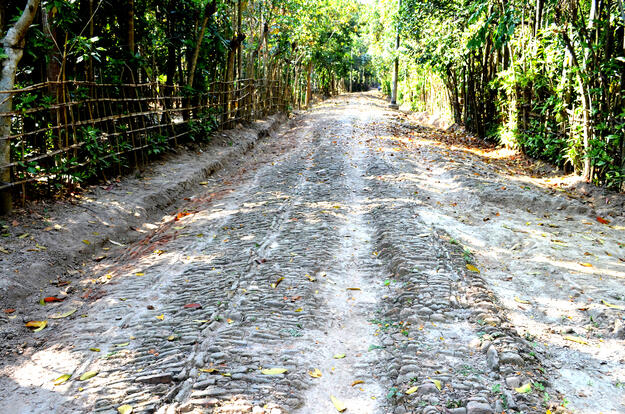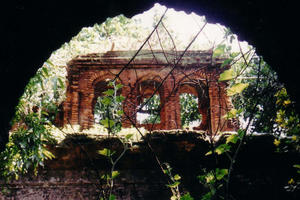Mosque City of Bagerhat
Site History and Significance
A Fifteenth-Century Capital
The Mosque City of Bagerhat preserves the surviving monuments of Khalifatabad, a town built in the fifteenth century under the governorship of Khan Jahan Ali, when the dominant power in the region was the Bengal Sultanate. Khan Jahan laid out his capital along the course of the Bhairab River, building mosques, water tanks, and a network of roads and bridges in an architectural style resembling the Tughlaq style of Delhi, adapted to the more tropical local climate.
Important monuments include the Shaṭ Gombuj, or Sixty Dome Mosque, the largest historic mosque in Bangladesh; Khan Jahan’s own tomb, which became a pilgrimage site when he was recognized as a saint after his death; the Nine Dome Mosque; and the Bibi Begani, Chuna Khola, Ranvijaypur, and Shingar Mosques, built to a square ground plan and covered by a single large dome. Many of the mosques were built adjacent to a freshwater tank, or dighi, excavated to create a reservoir of usable water. Today the historic mosques of Bagerhat are used daily for religious worship, and the Tomb of Khan Jahan plays host to an annual festival and fair dedicated to his memory.
Climate Change, Growth, and Disaster Management
Located in the Ganges Delta, the monuments of Bagerhat have long been affected by flooding. In the 1970s and 1980s, UNESCO supported implementing solutions that included installation of damp-proof layers near the base of the walls of the mosques. Today, Bangladesh ranks among the countries most affected by climate change over the past two decades, despite having contributed to a mere fraction of the world’s total carbon emissions. Rising sea levels and more frequent cyclones in the Bay of Bengal present a clear threat, while population growth and agricultural expansion have reduced downstream water flow in the river system, increasing the salinity of groundwater. At the same time, local farmers have transitioned from rice cultivation to more lucrative shrimp farming, which creates even more saline conditions.
2022 World Monuments Watch
Bangladesh is adapting to the changing climate through investments in infrastructure and improved disaster management. The 2022 World Monuments Watch is a call for continued exploration of climate adaptation mechanisms within the Mosque City of Bagerhat to ensure the monuments of Khalifatabad continue to serve the community as Bangladesh adapts to unprecedented environmental change.
![]()
Learn More
Through the World Monuments Watch, WMF collaborates with local partners to design and implement targeted conservation programs—including advocacy, planning, education, and physical interventions in the historic built environment—to improve human well-being through cultural heritage preservation.
Sign up for our newsletter to receive regular updates on our projects, stories from the field, upcoming events, and more!
![]()

